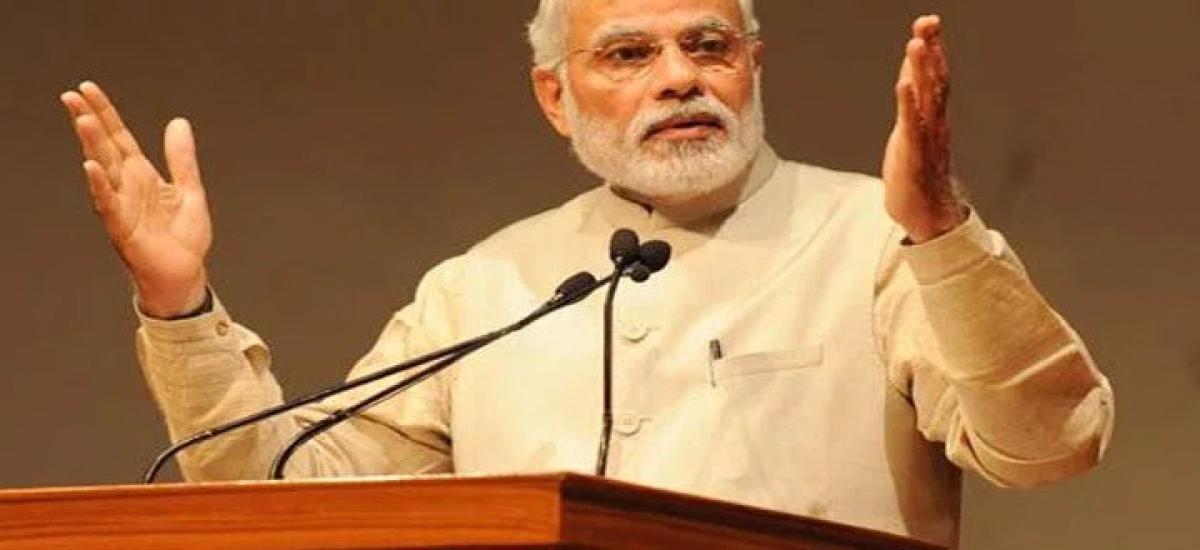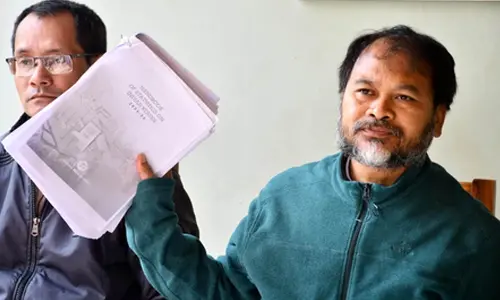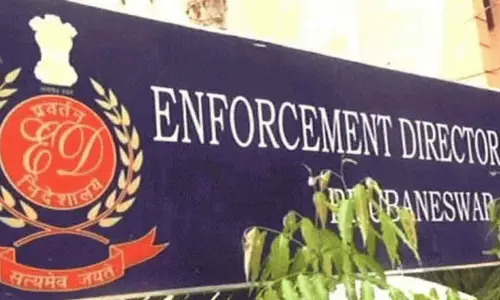The Centre has intimated to certain States that their food grain allocation would decline in spite of the mandatory 75 % rural and 50 % urban populations being covered under the proposed new law on Food Security As per the new privilege, 17 States and UTs will gain and 18 will stand to lose slightly. Amongst the 18 States which would lose food grain allocation are Andhra Pradesh, Tamil Nadu, Kerala, Delhi, Uttarakhand and some north-eastern States.
The government intends to protect the current allocation for each State but the major concern is over the cost at which the Food Ministry will make additional grains available. The Food Subsidy Bill is estimated at Rs. 1.24 lakh crore but the Centre is not willing to give States the additional food grains at the same subsidized rates. The Food Ministry is moving a proposal in Cabinet for provision of additional grains at the minimum support price given to farmers for wheat and paddy.
Schemes partially exist in different forms
Helping the poor has always been on the government’s agenda since independence. India, which currently spends 900 billion rupees on giving the poor access to cheap food, hopes to increase it to 1.3 trillion rupees ($22 billion) and widen its scope with an ambitious food security programme. Here’s a look at some of the government’s existing food schemes. Below Poverty Line (BPL): Households having BPL ration cards are issued 35 kg of rice and wheat for Rs 5.65 and 4.15 per kilogram. Last year, the planning commission calculated India’s poverty line for cities at 28.65 rupees per day.
Antyodaya Anna Yojana (AAY): The scheme, launched in December 2000, provides 35 kg of grains at heavily subsidized prices to the poorest among the BPL families. Each month, 25 kg of wheat is given at 2 rupees per kg, while 10 kg of rice is distributed for three rupees per kg.
Mid-day Meal Scheme: Catering to about 120 million children every day, this is the world’s largest school feeding programme. The aim is to improve nutritional levels among children, as also encouraging enrolment and attendance. Annapurna Scheme: This scheme targets senior citizens (65 years or older) and gives food security to those not getting a pension. Each month, beneficiaries get 10 kg of grains at no cost.
Emergency Feeding Programme: This scheme covers around 2,00,000 people in eight Kalahandi-Bolangir-Koraput (KBK) districts in Odisha, considered one of the most backward regions in the country. This scheme provides one cooked meal a day throughout the year.
Rajiv Gandhi Scheme for Empowerment of Adolescent Girls: The programme aims to improve the health of girls between 11 and 18 years, while also helping them understand more about sexual health and child care. The scheme also provides for health check-ups and supplementary nutrition 300 days a year.
Several innovative features in Chattis Act
Chattisgarh Government headed by Raman Singh introduced Food Security Act in the state in 2011. It precedes the similar act now sought to be made by the Manmohan Singh Government. The following are the salient features of that scheme. It is benefiting 3.4 million families in the state.
Following families have been excluded from its benefits: Those who pay income tax or property tax;
Those who own over 4 hectares of irrigated or 8 hectares of non-irrigated land in non-scheduled areas;
Given these conditions, only 10% of Chhattisgarh residents will be excluded, and 90% of the public will get the benefits of Food security.
Who gets benefit?
Everyone who doesn’t fall in above category is covered under the scheme.
The people are then classified into three categories and given benefits accordingly
Cost to the State treasury= Nearly Rs 2,500 crore.
That is almost 6% of Chattisgarh state’s GDP.
Other features
It covers the public distribution system, school meals, anganwadis (including take-home rations for pregnant/lactating women and children under three free meals for the destitute and homeless. It provides for not just food grain but also gram, iodized salt. Plus the food given to children (under mid-day meal) pregnant women and lactating mothers, will have additional nutritional standards like calorie and protein value. Ration cards would be issued in the name of the eldest woman in a family. Panchayats and Municipalities will be responsible for implementation of the Act.
Entitlements will be given on the basis of per household and not on per person. Going beyond the Centre’s definition of Antyodaya, the Chhattisgarh Government has declared as “Antyodaya households” all families of “vulnerable social groups” including tribal groups, widows or single women, terminally ill persons, physically challenged persons, elderly-headed households with no assured means of subsistence and persons freed from bonded labour. To prevent such leakage and corruption, the Bill provides for computerisation of records and publication of all beneficiary and benefits given to them. Gram Panchayats will be allowed to run ration outlets. Officials will be punished for non-compliance, under Essential commodities act.
Vigilance committees: social audits by Gram Sabha etc.

Andhra Pradesh needs an additional 1.76 lakh tonnes of rice per month to implement the Food Security Scheme. The state government is already supplying 4 lakh tonnes of rice for over 2.23 crore white ration card holders under the PDS, covering nearly 8 crore population in the state.
The new scheme is expected to increase the subsidy burden on the state exchequer to Rs 4,850 crore and the government expressed its inability to bear such a heavy burden unless the Centre shares part of it. Minister for civil supplies D. Sridhar Babu said that as per the norms stipulated by the Centre, under the Food Security Scheme, only 4.6 crore population would be covered and for the rest 3.4 crore people, the state government has to bear the subsidy burden.
AP launched it last November
The Government of Chief Minister N Kiran Kumar Reddy introduced Rs 1 per kilo of rice scheme on Novenmeber 1, 2012. Going by the 2.26 crore ration cards in circulation in the state currently, the number of poor people works out to more than the state's 2011 Census population of 8.46 crore. In reality, a lot of subsidy rice is known to find its way to shops and eateries for making idli and dosa batter.
Antyodaya Anna Yojana
Antyodaya Anna Yojana scheme is being implemented in Andhra Pradesh since April 2001. 35 kgs of Rice at the rate of Rs. 3.00 per kg per month to each card/ family is being supplied under this scheme.
'Amma Hastam'
The Andhra Pradesh government recently launched a new scheme, named Amma Hastam, to supply a basket of nine essential commodities to Below Poverty Line (BPL) families in the state. Under this every BPL family will be supplied one pack a month for Rs.185. It contains one kg each of red gram, palmolein oil, whole meal flour, wheat, iodized salt, half kg each of sugar, tamarind, quarter kg chilli powder and 100 gm turmeric powder. According to the government, the market price of these commodities is Rs.292. Thus, each card holder will get a benefit of Rs.107 per month. The scheme, said to be the first of its kind in the country, will benefit 7.5 crore people. The scheme would cost Rs.660 crore to the exchequer every year.
Much behind Food Bill entitlements
The most significant difference between the PDS as it currently functions in Gujarat and the Food Bill is that the Bill is expected to cover roughly 77.24 lakh families in the State. At present, Gujarat provides subsidised grain to only 7.35 lakh families under the Antyoday Anna Yojana (AAY) and 24.35 lakh Below Poverty Line (BPL) families, making it a total of 31.70 lakhs.
Modi's letter to the PM criticised the Centre for moving to a per capita entitlement system that would reduce the amount of grain a BPL family of five would be eligible for to 25 kilograms from the current 35 kg. However, Gujarat itself raised the BPL entitlement from 20 kg to 35 kg only in 2008 after a High Court order.
Neither is the entire 35 kg given to BPL families uniformly subsidised. The first 13 kg of wheat and the first 3 kg of rice is sold at the subsidised rate of Rs. 2 per kg (for wheat) and Rs. 3 per kg (for rice). The next 16 kg of wheat and 3 kg of rice are sold at Rs. 7.50 per kg for wheat and Rs. 7 per kg for rice. In contrast, the National Food Security Bill will provide all 5 kg of wheat at Rs. 2 per family member and all 5 kg of wheat at Rs. 3 per kg.
While many States have been improving their PDS over the last five years, Gujarat is one of the worst-performing Indian states on two aspects of the PDS: it has a low and falling per capita PDS consumption, and among the highest rates of food grain diversion, according to an analysis of National Sample Survey Organisation.
Uttar Pradesh to benefit despite grumblings

Uttar Pradesh will be the biggest beneficiary of the food security scheme, getting foodgrain worth around Rs 9,000 crore every year for its poor, though Samajwadi Party chief Mulayam Singh Yadav demanded a chief ministers' meeting on the issue. Earlier, Gujarat CM Narenra Modi too had raised a similar demand.
According to estimates, states like UP, Bihar and Rajasthan will see substantial increase in their annual food grain allocation. The government has also amended the scheme to take care of concerns of states like Tamil Nadu, Kerala, Jammu and Kashmir and Himachal Pradesh. The differential quantity of grains will go to states at the rate prescribed for people living Above Poverty Line (APL).
Food Minister K V Thomas said last week that in Bihar, 85.12% of rural population and 74.5% of urban population will be covered under this scheme. Similarly, in Uttar Pradesh, 79.5% people in rural areas and 64.43% of urban population will be covered.
Meanwhile, following Mulayam's demand to protect the interests of farmers, the government has said that to meet the increased requirement of food grain for implementation of the scheme, procurement will be further extended. It claimed that more farmers will get the benefit of minimum support price. After amendments, the food grain requirement for the scheme is estimated at 614.3 lakh tonnes as against the existing requirement of 563.7 lakh tonnes for the public distribution system.
Many unique features
.jpg)
The Public Distribution System in Tamil Nadu is a success story, in its coverage as well as its pricing. Each family, whether below the poverty line or not, is entitled to 20 kg of rice at Re. 1 a kg. This because, effective targeting of Below Poverty Line (BPL) families was felt to be an administratively difficult task, and there was a genuine risk of the people most in need of food security being left out. The State, for this reason, is now held up as a model for effective implementation of a comprehensive food security system. When the DMK Government took office in 2006, one of its first steps was to supply rice through the PDS for Rs.2 a kg. In September 2008, the PDS price was reduced to Re.1 a kg of rice.
From May 2007, in addition to rice, kerosene, and sugar, Tamil Nadu has been issuing wheat, wheat products, pulses and palmolien to cardholders. The State Government has been incurring substantial expenditures by way of food subsidy. From Rs. 734.85 crore during 2003-04, the amount increased to Rs. 4,000 crore by 2010-11. A majority of fair price shops in the State are run by the Cooperative Department. In fact, Tamil Nadu is the only State where fair price outlets are run either by the Government or by its agencies.
This system has proved to be advantageous since the wholesaler is a government corporation and all the retail shops are either Government-run cooperatives or under the control of the Civil Supplies Department. Most shops run on a loss. The Government routinely provides about Rs.300 crore as subsidy to run the Cooperative shops. Tamil Nadu is the only State to do this.
Didi says she has no money
.jpg)
With the food security scheme estimated to cost West Bengal over Rs 7,000 crore, the state government has decided to write to the Centre expressing its inability to implement the scheme in its present form. They say they have no money to take it up.
In West Bengal, the number of people falling under the below-poverty-line (BPL) category stood at 24 million, according to the latest available data. About 28 per cent of the BPL population is in rural areas, and 22 per cent in urban areas, according to data from National Sample Survey Office’s 2009-10 survey.
The state’s debt burden is in excess of Rs 2 lakh crore, with the yearly repayment obligation of Rs 25,000 crore.
At present, the West Bengal government provides rice at Rs 2 a kg in Maoist-affected areas, which costs around Rs 500 crore every year.
The National Food Security Bill states that the Centre should provide food grains to state governments at a specific price, though state governments are free to extend benefits and entitlement beyond what is prescribed in the Bill. The Bill says the Centre will provide assistance to the states towards the cost of intra-state transportation, handling of food grains and fair price shop dealers’ margin.


.jpg)


 Andhra Pradesh needs an additional 1.76 lakh tonnes of rice per month to implement the Food Security Scheme. The state government is already supplying 4 lakh tonnes of rice for over 2.23 crore white ration card holders under the PDS, covering nearly 8 crore population in the state.
Andhra Pradesh needs an additional 1.76 lakh tonnes of rice per month to implement the Food Security Scheme. The state government is already supplying 4 lakh tonnes of rice for over 2.23 crore white ration card holders under the PDS, covering nearly 8 crore population in the state. 
 Uttar Pradesh will be the biggest beneficiary of the food security scheme, getting foodgrain worth around Rs 9,000 crore every year for its poor, though Samajwadi Party chief Mulayam Singh Yadav demanded a chief ministers' meeting on the issue. Earlier, Gujarat CM Narenra Modi too had raised a similar demand.
Uttar Pradesh will be the biggest beneficiary of the food security scheme, getting foodgrain worth around Rs 9,000 crore every year for its poor, though Samajwadi Party chief Mulayam Singh Yadav demanded a chief ministers' meeting on the issue. Earlier, Gujarat CM Narenra Modi too had raised a similar demand..jpg) The Public Distribution System in Tamil Nadu is a success story, in its coverage as well as its pricing. Each family, whether below the poverty line or not, is entitled to 20 kg of rice at Re. 1 a kg. This because, effective targeting of Below Poverty Line (BPL) families was felt to be an administratively difficult task, and there was a genuine risk of the people most in need of food security being left out. The State, for this reason, is now held up as a model for effective implementation of a comprehensive food security system. When the DMK Government took office in 2006, one of its first steps was to supply rice through the PDS for Rs.2 a kg. In September 2008, the PDS price was reduced to Re.1 a kg of rice.
The Public Distribution System in Tamil Nadu is a success story, in its coverage as well as its pricing. Each family, whether below the poverty line or not, is entitled to 20 kg of rice at Re. 1 a kg. This because, effective targeting of Below Poverty Line (BPL) families was felt to be an administratively difficult task, and there was a genuine risk of the people most in need of food security being left out. The State, for this reason, is now held up as a model for effective implementation of a comprehensive food security system. When the DMK Government took office in 2006, one of its first steps was to supply rice through the PDS for Rs.2 a kg. In September 2008, the PDS price was reduced to Re.1 a kg of rice..jpg) With the food security scheme estimated to cost West Bengal over Rs 7,000 crore, the state government has decided to write to the Centre expressing its inability to implement the scheme in its present form. They say they have no money to take it up.
With the food security scheme estimated to cost West Bengal over Rs 7,000 crore, the state government has decided to write to the Centre expressing its inability to implement the scheme in its present form. They say they have no money to take it up.













